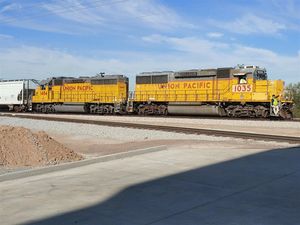Financial News
Nomad Foods: A Defensive Stock on the Move

When Nomad Foods Limited (NYSE: NOMD) fell to a five-year low last week, investors decided enough was enough.
Buyers began nibbling on the U.K.-based company ahead of its preliminary financial results release on Halloween day. The timing of the bottom-feeding looks scary good with the stock now up more than 20% from its $12.50 low.
The mid-cap frozen foods specialist could surely use a break.
Supply chain challenges and Russia’s invasion of Ukraine have made it difficult for management to deliver an appetizing outlook. Inflation’s impact on consumers’ ability to spend on pre-made entrees is another reason the market put the stock on ice.
Nomad may finally be unthawing though thanks to an upbeat preliminary Q3 report.
Let’s dig in further.
What is Nomad Foods’ Growth Strategy?
Nomad Foods owns a portfolio of frozen foods brands, the most familiar of which to Americans is Birds Eye vegetables. Clarence Birdseye was credited with inventing frozen foods when he launched Birdseye Seafoods exactly 100 years ago. Since then, the company added the Ingus and Findus frozen food brands and, more recently, Goodfellas frozen pizzas and Aunt Bessie’s frozen meals.
To this day, Nomad is sticking with the frozen foods script. Why frozen?
The category has proven to be a resilient one throughout the economic cycle mainly because consumers can stock up and store the items at will. Growth is expected to persist in line with shoppers’ increasing preference for healthy and convenient foods. Over 80% of Nomad’s portfolio is considered a healthy choice. Three-fourths of its products are chicken, fish or veggies.
While getting its brands into supermarket freezers remains at the core of the growth strategy, e-commerce is an evolving catalyst too. As grocery delivery gains popularity in the wake of the pandemic, more frozen items are being dropped off at residential doorsteps than ever before. With Birds Eye already one of the top online grocery brands in the U.K., e-commerce growth will be an important growth driver.
Acquisitions are another key growth component. The European frozen food business is fragmented and one that Nomad plans to consolidate going forward. It has bought out four companies since its 2015 inception including last year’s purchase of Fortenova. Management expects to use the cash generated in the core business to expand the portfolio.
How Will Nomad Foods Perform in 2022?
Factoring in the supply chain and geopolitical headwinds, Nomad Foods is holding up quite well in 2022. It helps when your products are in constant demand and rank number one or two across most of the portfolio.
Nomad’s preliminary Q3 readout revealed that revenue was up 7% as price increases helped offset lower volumes. The highlight though is that profitability moved higher despite the weakened macro environment. Gross margin expansion from 28.0% to 29.1% shows that higher raw materials costs are being effectively absorbed by the consumer. This reflects the defensive nature of the stock.
Management reaffirmed its guidance for “high-single-digit” earnings growth in 2022, which includes a full-year contribution from Fortenova. More importantly, it told the market that profits are on the rise — and that the stock may be oversold.
The technical indicators seem to agree. On October 24th, Nomad Foods slipped outside the lower Bollinger Band and the RSI dipped under 30 on the daily chart. It has since rallied in above-average trading volume.
Is Nomad Foods a Good Defensive Stock?
Barclays and UBS have good reads on Nomad Foods. Earlier this month, both research firms reiterated buy ratings on the stock with price targets of $18 and $19 respectively.
At current levels, Nomad Foods trades around 9x next year’s earnings estimate. This is an attractive valuation even relative to the consumer staples sector average P/E. This has expanded in recent months amid a flight to safety.
However, prospective investors should note that the company does not currently pay a dividend. Dividends are a primary attraction of defensive stocks, which makes Nomad somewhat less appealing. In contrast, domestic packaged foods players like Kraft Heinz (4.1% yield) and General Mills (2.6% yield) come with substantial cash payouts.
What Nomad Foods does offer that these companies do not is direct exposure to Western Europe where it is the market leader in frozen foods. This makes it an under-the-radar way to play defense and gain exposure to the healthy eating theme.
Riding a five-day winning streak from a long-term bottom, Nomad looks like it wants to keep moving higher.
More News
View More





Quotes delayed at least 20 minutes.
By accessing this page, you agree to the following
Privacy Policy and Terms Of Service.



